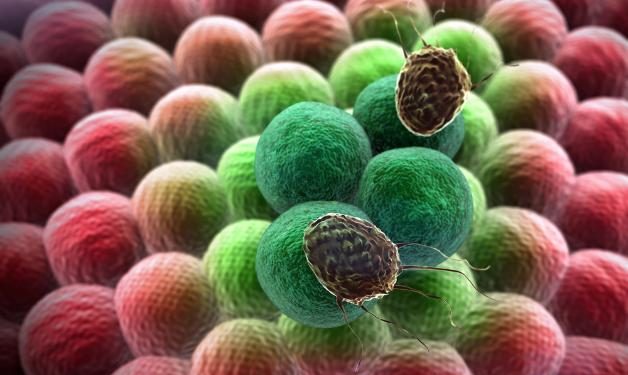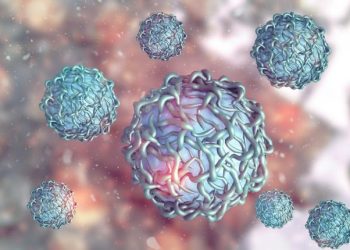Some people with cancer feel intimidated or unnerved by systems that reduce their condition to a formula of numbers and letters. Healthcare providers understand that.
Leukemia is a cancer that starts in blood cells in the bone marrow and gets worse over time. Cancerous lymphocytes overrun healthy lymphocytes in the blood and lymph nodes, and can also invade organs like the spleen or liver.
What is CLL?
The lymphocytes that make up CLL start in the bone marrow and spread throughout your blood and body. Unlike some other types of leukemia, it usually grows slowly and you may not need treatment for years. But when you do, it can slow the growth of cancerous cells and help reduce your symptoms.
Your doctor will take a history of your symptoms and do lab tests to find out if you have CLL. If you do, they’ll test your blood for different kinds of white blood cells and look at the way your lymph nodes are growing. They’ll also check if you have other signs of cancer, like a high red blood cell count or a chromosome 17p deletion.
CLL often develops in people over 60 and is more common in men than women. It can be hard to diagnose because it’s not always painful or noticeable, and many people have it for several years before being diagnosed.
You’re more likely to have CLL if you have a family history of the disease or other risk factors. These include having a genetic mutation, being older when you’re first diagnosed, or being exposed to the chemical Agent Orange during the Vietnam War. Your doctor will discuss your risk factors with you to help decide if you should be treated.
Your treatments for CLL will depend on how the cancer is diagnosed and its stage. Early-stage CLL can be cured with chemotherapy. If your cancer is in the later stages, you might need a stem cell transplant to replace the damaged immune system.
Sometimes, even after receiving treatment for your CLL, it comes back (relapses). If this happens, you may need other treatments to help keep the cancer from coming back.
At MD Anderson, we offer a wide range of therapies for CLL. We’re also studying ways to improve existing treatments and develop new ones. If you’re interested in participating in a clinical trial, your doctor will help you find one that’s right for you. Our supportive care services can also help you cope with fatigue and nausea from treatments.
Symptoms
In chronic leukemia, the bone marrow produces too many immature white blood cells (leukemia cells). These abnormal lymphocytes take up more space than healthy ones, so they crowd out healthy cells and keep them from doing their jobs. The cancerous cells also prevent the bone marrow from making platelets, which help the blood to clot. This leads to bleeding and bruising. Symptoms vary, but they tend to develop slowly and may go unnoticed for years.
These symptoms are similar to those of other conditions, so it’s important to get them checked by a GP as soon as you think something might be wrong. Having these symptoms does not necessarily mean that you have CLL, but it’s best to find out if they are caused by cancer as early as possible because this will help with treatment.
Different types of leukemia grow differently and some cause fewer or different symptoms. It’s thought that most chronic leukemias start in stem cells and develop into lymphocytes, but these cells are not normal and become cancerous. There are also some types of leukemia that develop in other types of cells and then move to the bone marrow, which is called myelogenous leukemia (mai-uh-LOO-jenous leukemia).
It’s not clear what causes leukemia. But some factors may increase your risk of getting it, such as having a close family member who’s had it. If you have a family history of leukemia, talk to your GP about whether or not you should be screened for it.
The GP will ask about your symptoms and do a physical exam. They will feel for swollen glands and may check your liver and spleen. They will also order a complete blood count, which shows the levels of red and white blood cells, and platelets in your blood. A blood sample will also be tested to look for signs of leukemia, such as abnormal numbers of certain types of lymphocytes. If they are found, other tests will be done to identify the type of leukemia you have and decide what treatments you need. You might need chemotherapy, immunotherapy, or a combination of these treatments.
Diagnosis
A doctor can usually diagnose CLL by blood and bone marrow tests. These help them see how many blood cells are normal and how many are cancerous. They can also look for other signs of leukemia, such as enlarged lymph nodes. The marrow test checks how many blood-forming cells are in the spongy inner part of bones (the bone marrow). It can be hard to find enough healthy bone marrow in people with CLL, so sometimes they may need to get it from elsewhere, such as the spleen or liver.
These tests also check for specific changes (mutations) in the genes of the leukemia cells. These changes are what make the cells grow out of control and cause the symptoms. They are called mutations because they change the way the cell functions. For example, they may stop the cell from making healthy lymphocytes. They may also keep the cell from dying when it is supposed to. This can lead to too few normal blood-forming cells in the bone marrow and too many abnormal ones.
Other tests may be used to check how well you’re responding to treatment or whether the leukemia is changing into another type of lymphoma. These include flow cytometry and immunophenotyping. These are tests that use chemicals and dyes to identify specific parts of the leukemia cells. They can tell whether the cells are cancerous, what type of leukemia they are, and how fast they’re growing.
You might have a lymph node biopsy if your doctor is unsure about the diagnosis or if they think you have Richter’s syndrome. A doctor will remove a sample of the lymph node, usually while you’re under local anaesthetic. They’ll then send it to a lab for testing.
If the test results are inconclusive, your doctor might ask you to have more tests or refer you to a specialist. If you’re diagnosed with chronic lymphocytic leukemia, you might need to see a specialist in lymphoma for further tests or treatments. You might also want to join a support group for people with the same condition as you. This can be a great source of information, practical tips and encouragement.
Treatment
Like all leukemias, chronic lymphocytic leukemia starts in the blood and bone marrow. In CLL, the immature white blood cells that normally form in the bone marrow aren’t formed correctly and become cancerous. These cancer cells can’t fight infection as well as healthy white blood cells. Over time, they build up and crowd out normal blood cells, which can cause problems throughout the body.
Doctors aren’t sure what causes CLL, but many things increase your risk of it. These include age (it’s most common in people over 55) and having a family history of blood and bone marrow cancer. Exposure to chemicals, such as herbicides or insecticides used in the Vietnam War, may also raise your risk.
Some types of leukemia are more likely to grow and spread quickly than others. The type of leukemia you have helps doctors predict how fast it will grow and what kind of treatment you need.
Your healthcare team will test your blood for signs of leukemia, including a complete blood count and other tests. They will use these results to determine your stage of chronic lymphocytic leukemia.
The stage of your chronic lymphocytic leukemia helps decide what treatments you’ll need. If your leukemia is in the early stages, you might not need any treatment at all. In this situation, your providers might choose watchful waiting (active surveillance). They’ll monitor your symptoms and health, and check for changes in your blood cells periodically.
If you have more advanced chronic lymphocytic leukemia, your provider might prescribe chemotherapy to kill cancerous cells and keep them from growing. They might also suggest radiation therapy, a treatment that uses X-rays to target cancer cells and help them die. They might also recommend monoclonal antibody therapies, which attach antibodies to cancerous cells and destroy them.
A type of leukemia called large granular lymphocyte (LGL) leukemia is different from the other types. In LGL, the cancerous lymphocytes are large and have features of both T cells and natural killer (NK) cells. These kinds of leukemia are harder to treat than other types of chronic lymphocytic leukemia.









